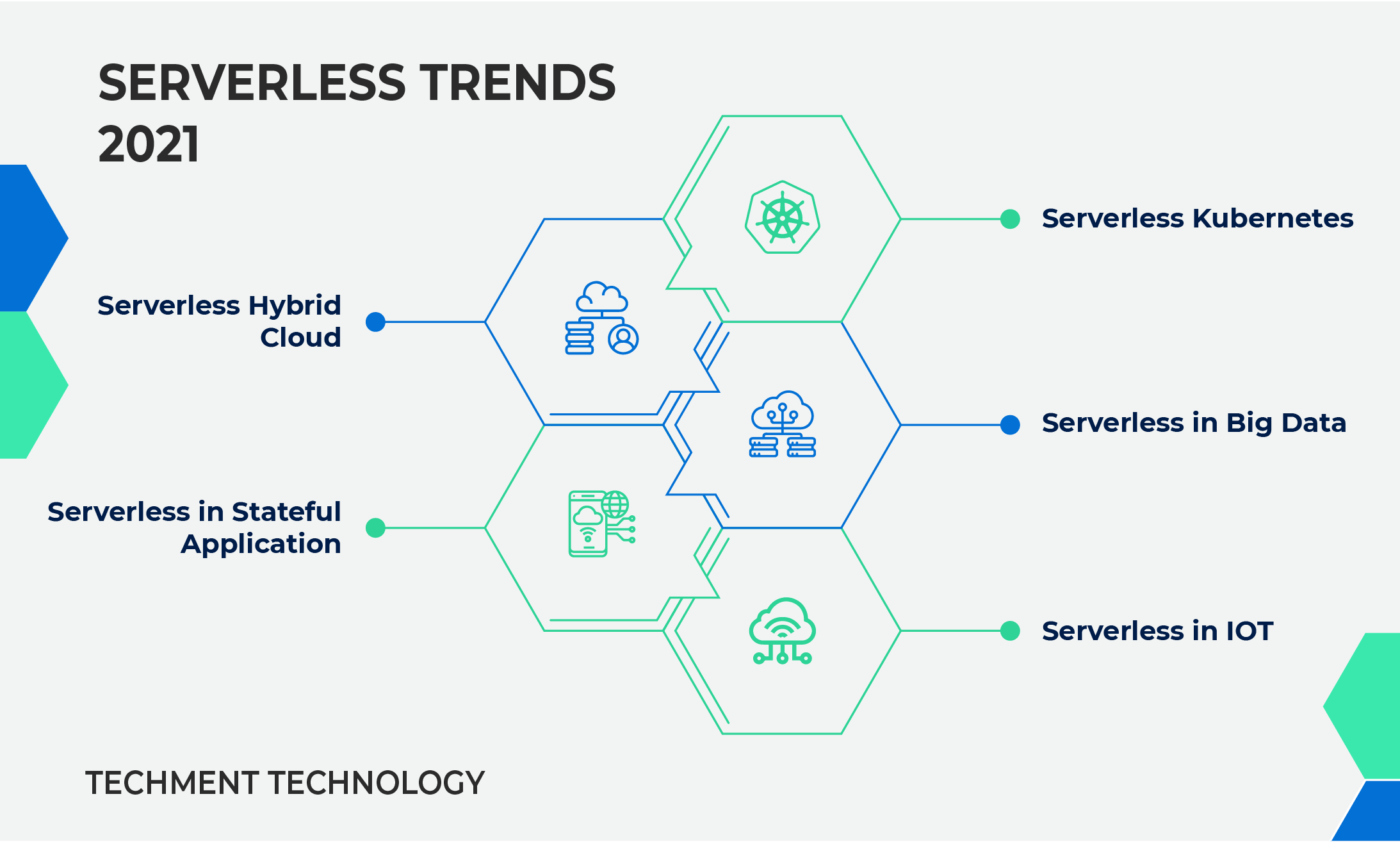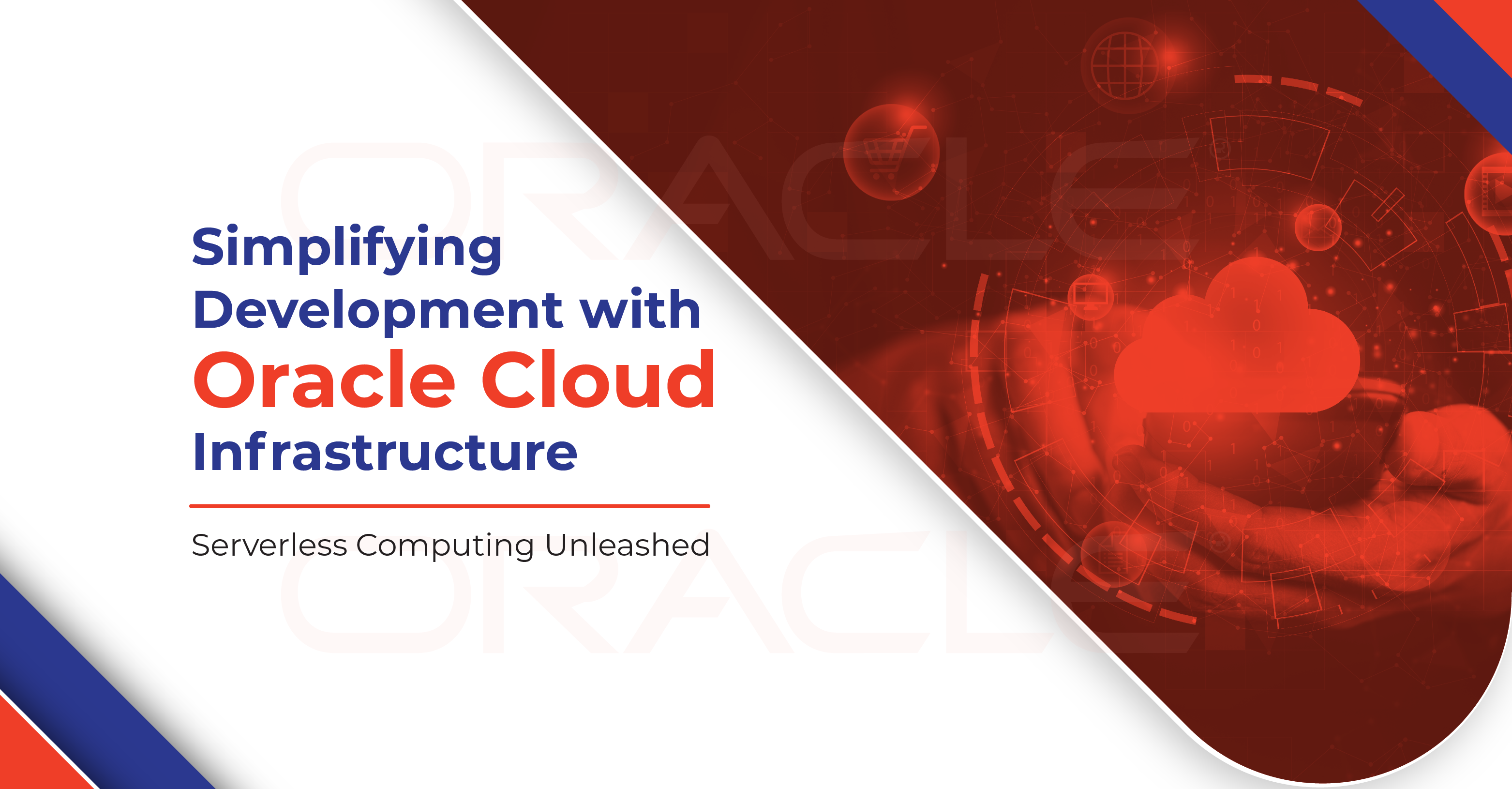Serverless Architecture in Demand by Enterprises
Serverless sounds like the application lacks a server whereas software and hardware are running somewhere. The term was popularized after 2015 after Amazon launched Amazon Lambda. After that cloud vendors like Google & Microsoft started embracing it. It brought a more simplified method of application development.
Businesses are finding it as a solution to free themselves from system administration. This is providing both technological advancement and reducing infrastructure cost. Companies got more opportunity to scale the server up and down according to user requests. It’s possible to build, test & deploy the code without any host solutions. This has made deployment (management) of codes easier.
Serverless Vs FaaS
Serverless means you don’t have to take authority of the server or its administration, it’s handled by some cloud providers sitting between frontend and database. Let’s say that this is stored in a folder in the cloud. When a request comes from the user, this folder which contains components (like code, APIs etc.) is fetched from the cloud. So you have less control on what is there in the stack.
FaaS also harnesses the cloud technology and relegate infrastructure management to cloud, so often used interchangeably with serverless. FaaS is server-side logic which is maintained by developers and not by cloud providers. It runs on a stateless container and is managed by a third party vendor. Here front end code is uploaded to the service and providers take care of complexities of the backend. This doesn’t require coding to a specific framework or library.
Why does Serverless hold Great Promises for Enterprises?
It unburdens the businesses from infrastructure management and helps to focus them more on the efficient work rather than engaging a team to manage those servers. Besides, this has other advantages;
- Reduced Operational Cost: Infrastructure is only used for specific time, when the user has made a request, so it implies less runtime costs.
- Ease of Development: Developers are more focused towards core features as they don’t have to handle the cloud. Managing infra is done by cloud providers.
- Reduced Scaling Cost: You don’t need to manage the horizontal scaling since that is managed by a cloud provider. So you need to pay for what you compute.
- Reduced Deployment Complexity: No worries of deployment of code in containers. No need of packaging anything and that also reduces complexity.
- Easy Updates: Developers can also quickly update, repair, fix or add new features to applications. They don’t have to change the entire application; instead, developers can update one application at a time.
- Lower Latency: Since code doesn’t need to be hosted on the origin server, it can be run from anywhere. Latency is reduced as requests have to no longer travel from origin.
Prevailing Trends in Serverless in 2021
Serverless technology has become mainstream and has begun to draw attention to creating scalable, professional, and future-oriented applications. With the increasing popularity of Amazon Web Servers (AWS), Microsoft Azure, and Google Cloud Provider (GCP), serverless has become more important. This provides greater flexibility for developers to easily create and maintain applications. It is widely used in the industry to provide robust and scalable applications. Therefore, you need to keep up with the trend of serverless technology to take full advantage of this cutting-edge technology.

- Serverless IoT: We may see a dramatic increase in the number of field devices. In this case, devices and stakeholders will see slow responses from the cloud, and sometimes even from the infrastructure the cloud may also fail & may not be able to process any messages. By implementing serverless architecture, resources will be provisioned only on request and at time of need. The resource allocation management will allow us to utilize resources in a more efficient manner.
- Serverless Kubernetes: The serverless mode on Kubernetes is a portable solution that allows you to run applications wherever Kubernetes is running. The serverless version allows developers to use their own cloud infrastructure to easily deploy, monitor, and run these applications. The serverless version saves developers from the trouble of providing a host or virtual machine.
Kubernetes helps developers and operators simplify their work by developing complex solutions for serverless applications. Popular containers such as Azure, AWS Fargate, and Knative make it easy to develop cloud applications, create services, and create events.
- Serverless Hybrid Cloud : Developers who wish to build applications that utilize two or more serverless clouds should consider writing and implementing functions as a service. If you are looking for tools to monitor, manage, and protect hybrid serverless environments, cloud administrators should check out open source projects. Knative is a Kubernetes-based platform for driving DevOps workflow, is used for the unified development of containerized and serverless applications for configuration on public and private cloud platforms.
- Serverless in Big data: Now we can’t expect the rate of incoming data to be fixed in the data streaming layer. Therefore, we need real-time storage, which can be expanded when the incoming data increases in a large amount and decreases when the data transfer rate is low.
Serverless big data architecture focuses on the decoupling of computing and storage nodes. Not only is decoupling, but the need for automatic management means that the database server is automatically started/shut down, scaled up or down according to the load on the database server, which can be done in a serverless architecture. In addition, the cost should also depend on usage, as Amazon Aurorado does it on a per-second basis.
- Serverless in Stateful Application: Cloud companies can take their applications to a new level. Distributed enterprise applications can be Stateful, recover automatically, quickly recover from disasters, and scale at the infrastructure and application levels, with minimal reliance on centralized databases.
By expanding the database to serverless or copying the cache system, large amounts of data can be processed relatively quickly. By event sourcing, functions catch up to the current state while starting up.
Future of Serverless
The definition of serverless is constantly evolving. It started with FaaS (Function-as-a-Service), but now includes other aspects of the application. Serverless development requires serverless computing, as well as serverless storage. They drive innovation so that developers can access all these features. This is not only important for small teams and developers who want to develop products without major investments in scalability, server maintenance, etc., but also for enterprise developers who want to shorten the time-to-market.
Technological advancements in the cloud have paved the way for serverless computing, which has the potential to provide better scalability, business and workflow stability, and cost-effective solutions. With top high-end potential development trends in serverless such as FaaS, Serverless IoT, Kubernetes, organizations can accord themselves by embracing these trends with massive benefits that adhere to serverless computing.
 All Posts
All Posts
